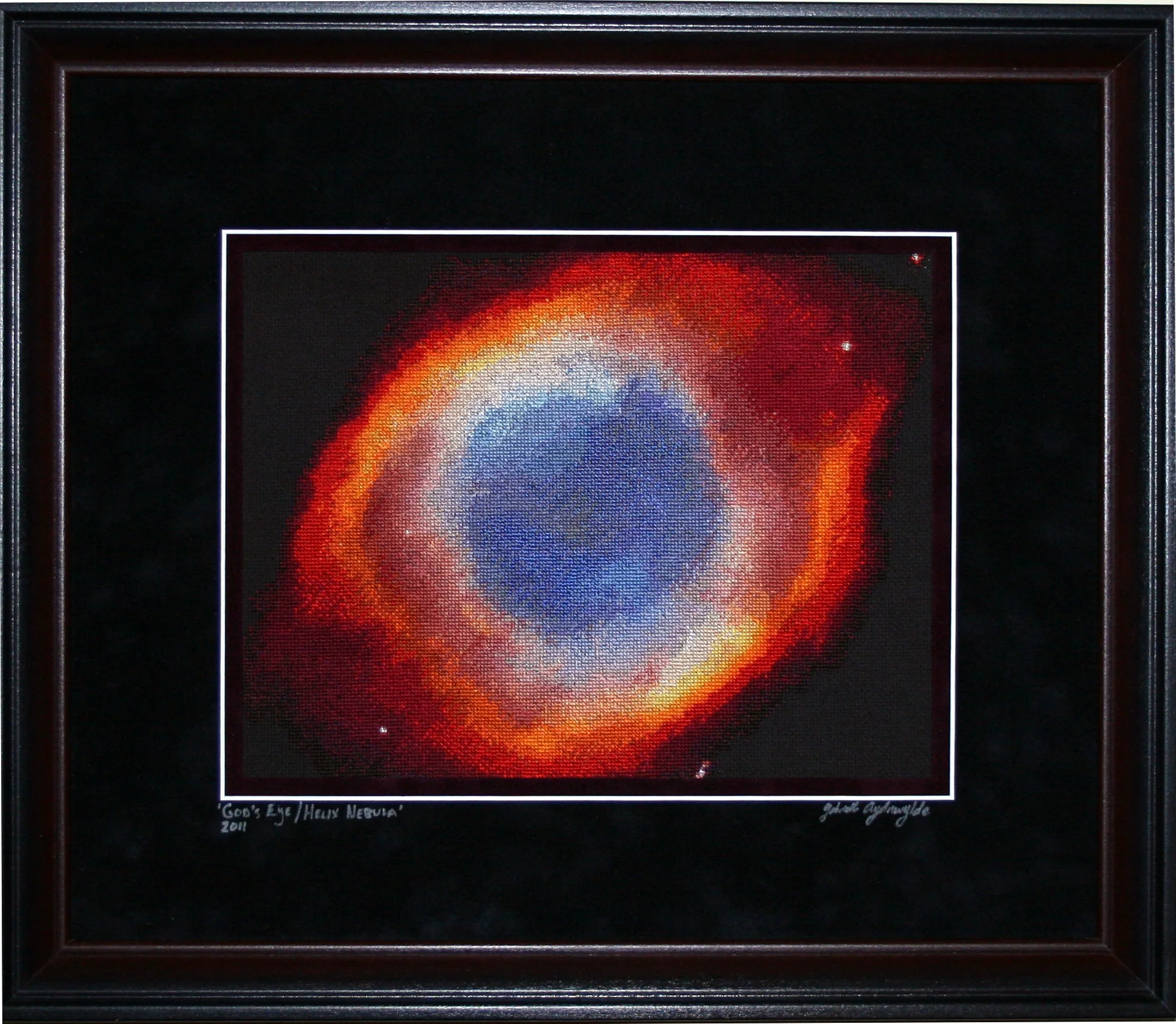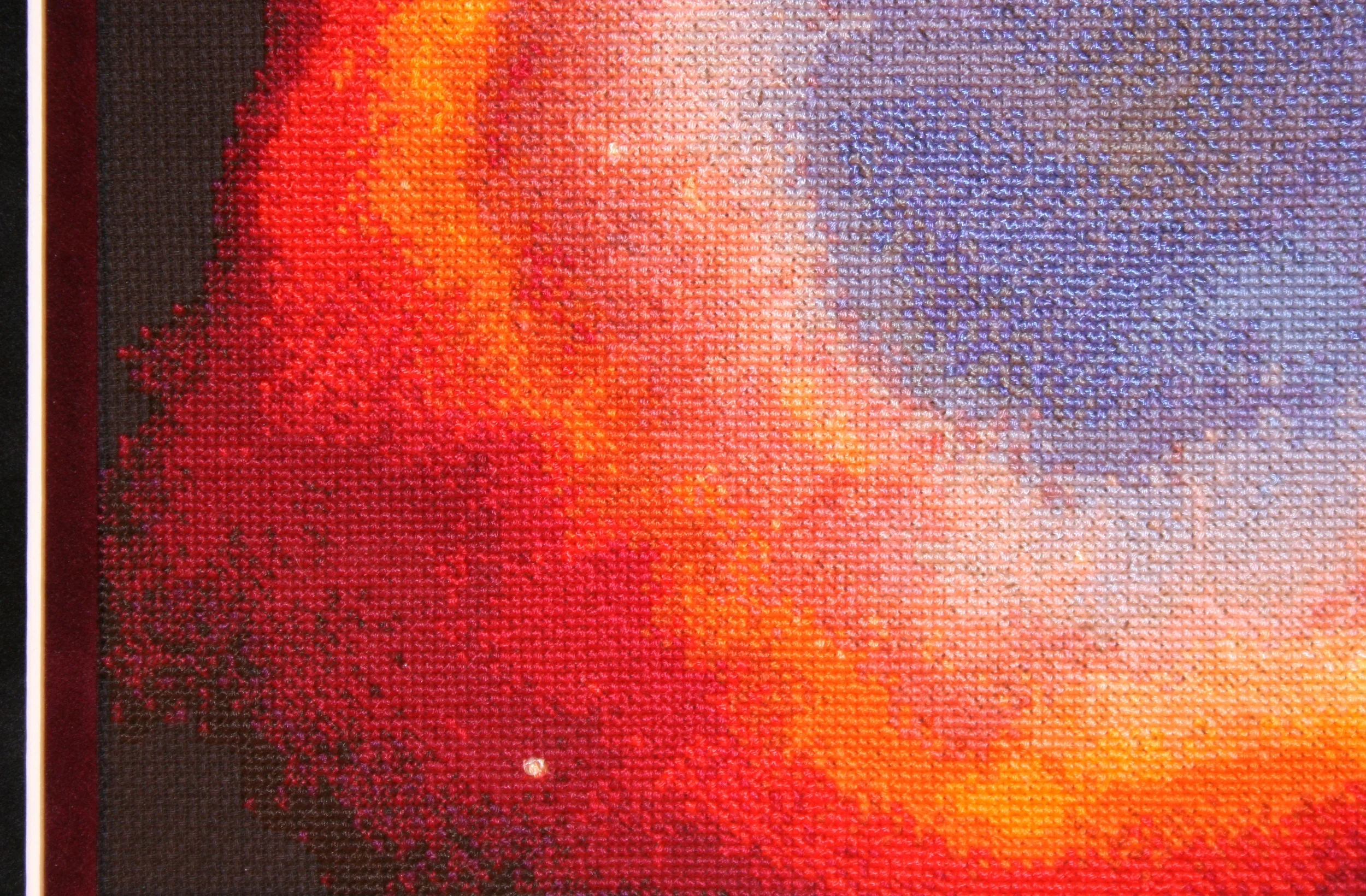



Your Custom Text Goes HEre
Helix Nebula
2011
8 1⁄2 x 10 3⁄4 in.
cotton
$9,300
Currently Hanging: Zeitgeist Gallery, Beverly, MA
Helix is an interesting object, not least of which because it is a demonstration of how easy it is to anthropomorphize or deify what appears in the heavens. It’s a very young nebula, only about ten and a half thousand years old (give or take a thousand or two); it blossomed in our sky around the time of the rise of agriculture. It’s also very close: only 650 light-years away.
What I love most about this nebula is not only the striking, glorious colors of the fluorescing gases (blue oxygen, red hydrogen and nitrogen) but the fact it is, as NASA put it, the end of a “trillion-mile long tunnel of glowing gases”, all pointing back to a super-dense white dwarf star. It is that dying sun which is radiating the energy (not light – white dwarfs are very faint) that makes the gases glow.
This one gleaming bubble in the cosmos is a reminder that our perspective is everything, even as we look and imagine we are being observed in return.
The picture which inspired this piece was created from images from the Hubble Space Telescope and the Mosaic Camera at the Kitt Peak National Observatory. Specific credit belongs to: NASA, NOAO, ESA, the Hubble Helix Nebula Team, M. Meixner (STScI), and T.A. Rector (NRAO).
Helix Nebula
2011
8 1⁄2 x 10 3⁄4 in.
cotton
$9,300
Currently Hanging: Zeitgeist Gallery, Beverly, MA
Helix is an interesting object, not least of which because it is a demonstration of how easy it is to anthropomorphize or deify what appears in the heavens. It’s a very young nebula, only about ten and a half thousand years old (give or take a thousand or two); it blossomed in our sky around the time of the rise of agriculture. It’s also very close: only 650 light-years away.
What I love most about this nebula is not only the striking, glorious colors of the fluorescing gases (blue oxygen, red hydrogen and nitrogen) but the fact it is, as NASA put it, the end of a “trillion-mile long tunnel of glowing gases”, all pointing back to a super-dense white dwarf star. It is that dying sun which is radiating the energy (not light – white dwarfs are very faint) that makes the gases glow.
This one gleaming bubble in the cosmos is a reminder that our perspective is everything, even as we look and imagine we are being observed in return.
The picture which inspired this piece was created from images from the Hubble Space Telescope and the Mosaic Camera at the Kitt Peak National Observatory. Specific credit belongs to: NASA, NOAO, ESA, the Hubble Helix Nebula Team, M. Meixner (STScI), and T.A. Rector (NRAO).